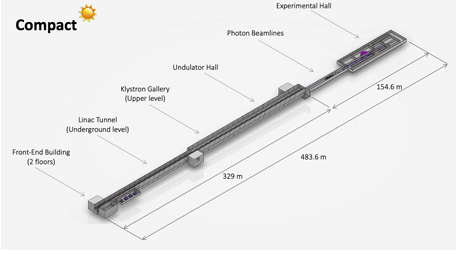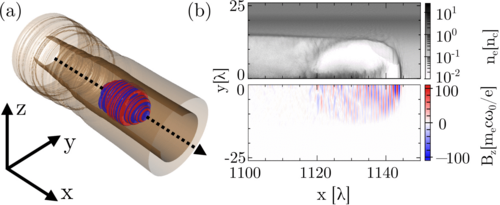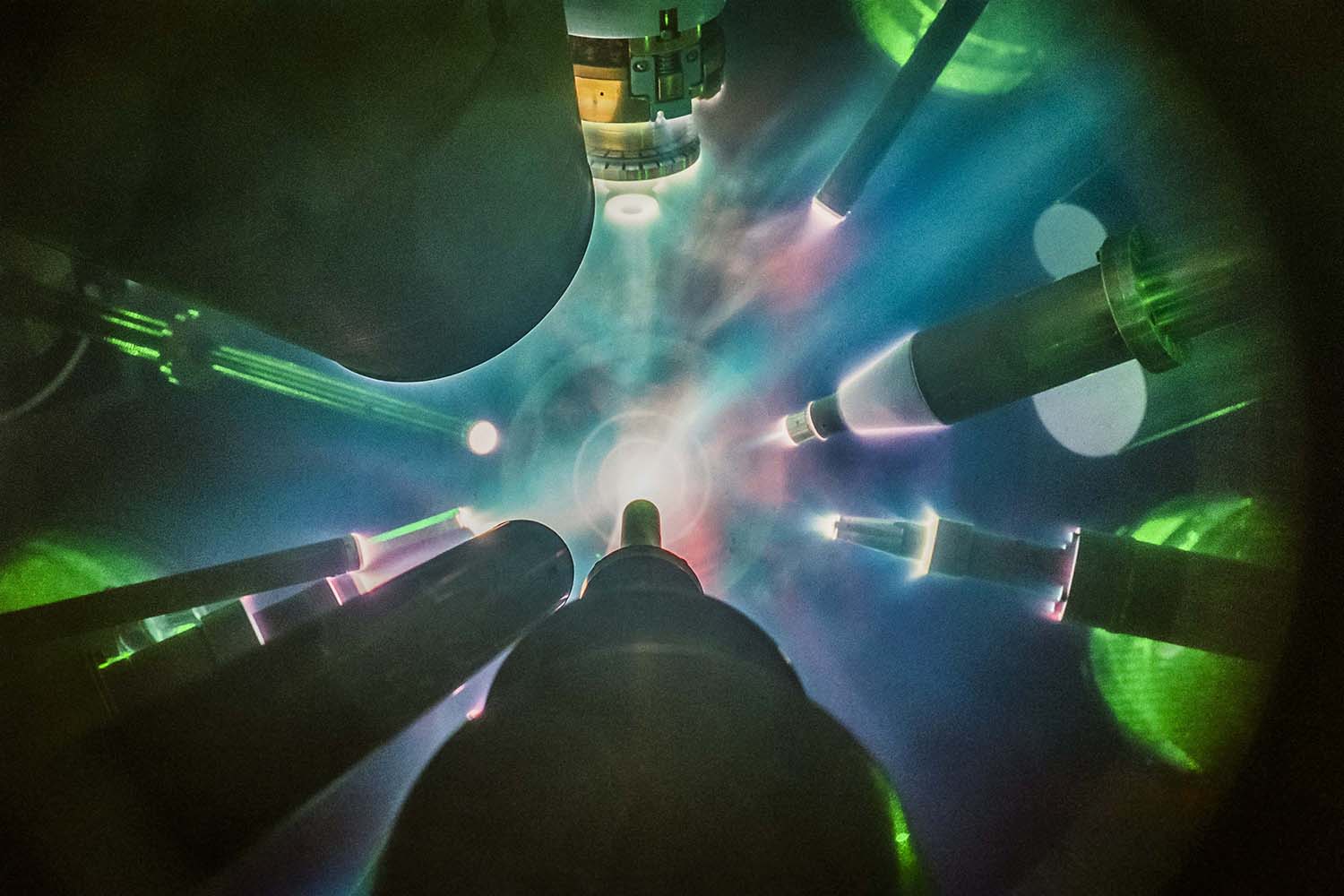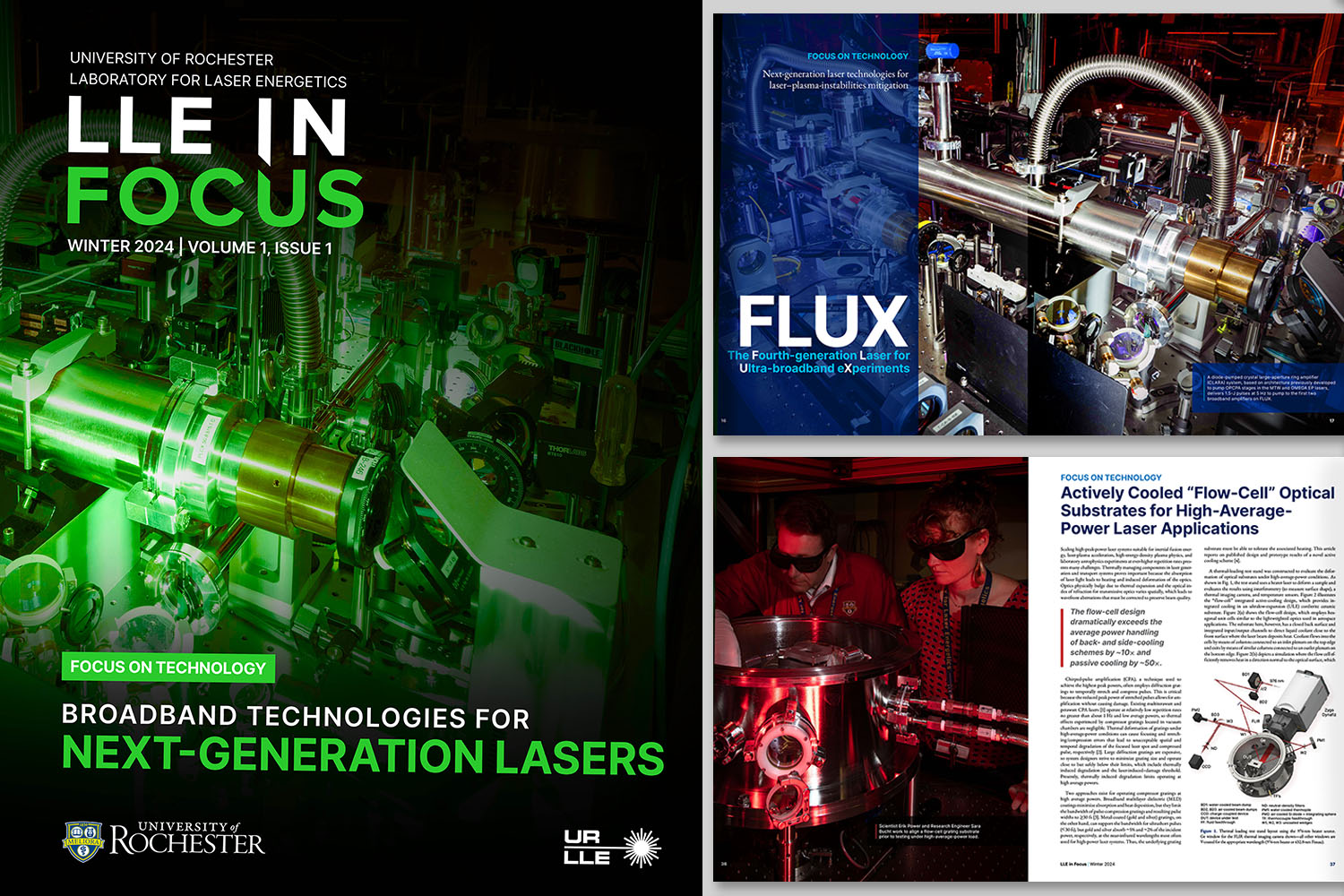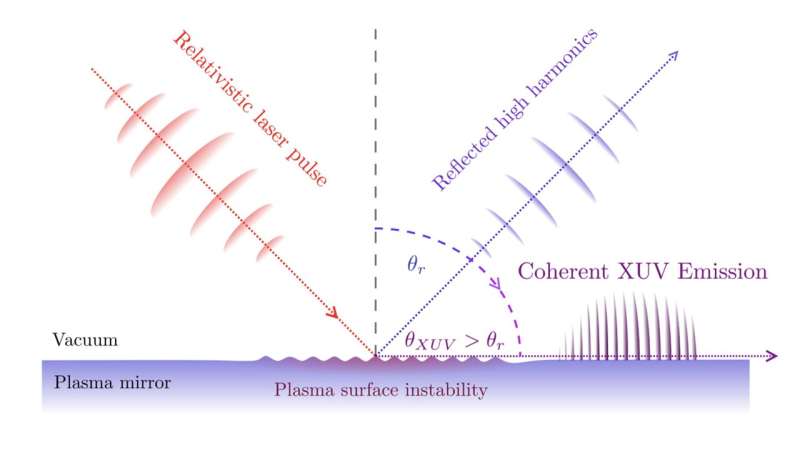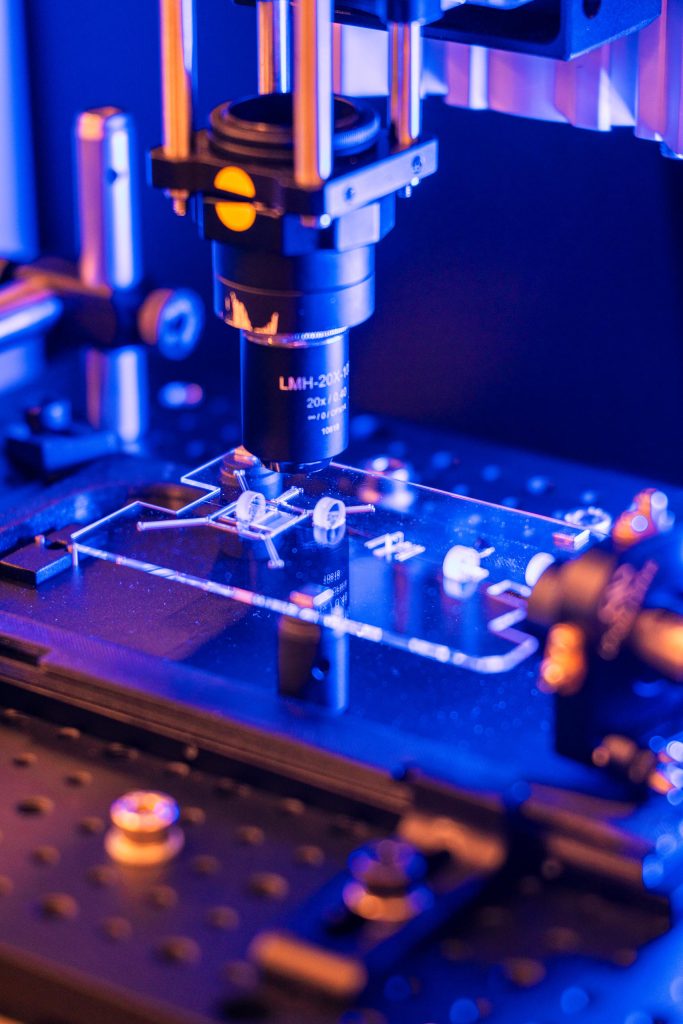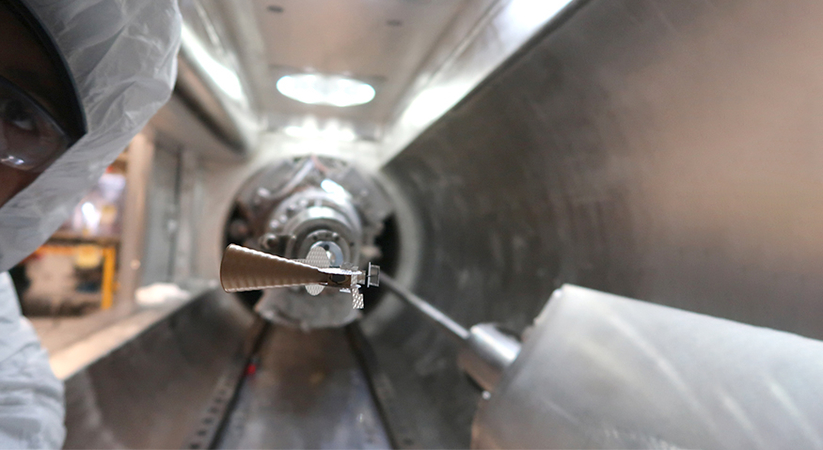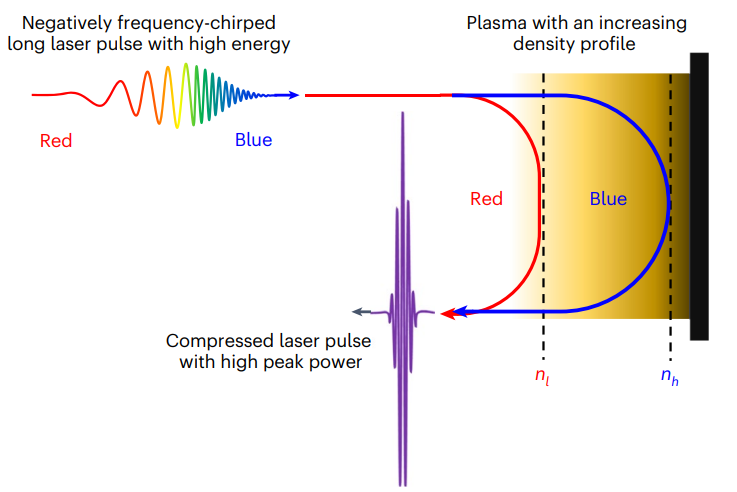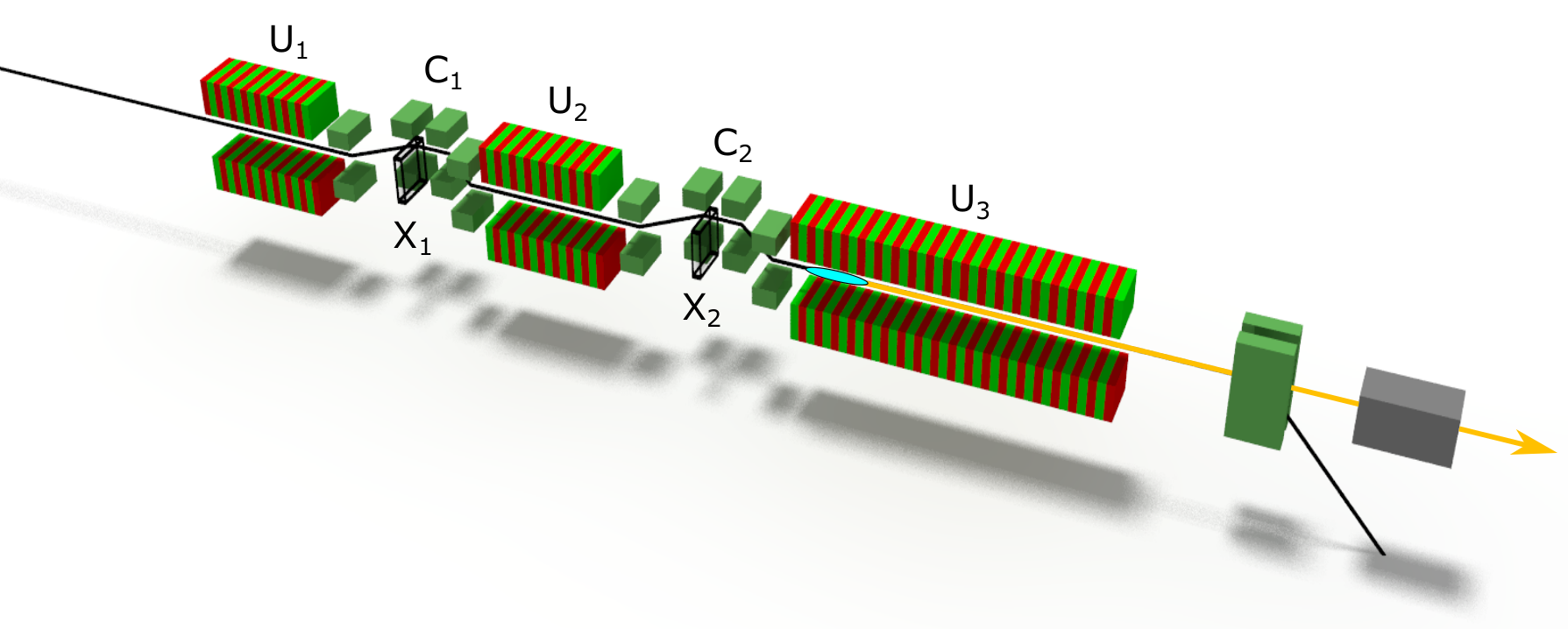Search by keywords or author
News
Many advances in structural science since the 1970s were made by probing materials with synchrotron radiation: that is, high energy X-rays generated through accelerating high-energy electrons. The latest generation of such sources, X-ray free electron lasers (XFEL), are far more powerful than their predecessors but are only accessible to international consortia and a few rich countries because of their high cost.
- Apr. 16, 2024
Publication
Researchers from the Centre for Advanced Laser Applications have developed a novel approach that combines multi-objective and multi-fidelity optimization, which could significantly speed up the optimization of complex systems like laser-plasma accelerators. The work, recently published in IOP Machine Learning: Science and Technology, introduces the innovative use of a trust metric to facilitate the joint optimization of multiple objectives and data sources.
- Apr. 08, 2024
Publication
The direct laser acceleration (DLA) of electrons in underdense plasmas can provide hundreds of nC of electrons accelerated to near-GeV energies using currently available lasers. Here we demonstrate the key role of electron transverse displacement in the acceleration and use it to analytically predict the expected maximum electron energies. The energy scaling is shown to be in agreement with full-scale quasi-3D particle-in-cell simulations of a laser pulse propagating through a preformed guiding channel and can be directly used for optimizing DLA in near-future laser facilities. The strategy towards optimizing DLA through matched laser focusing is presented for a wide range of plasma densities paired with current and near-future laser technology. Electron energies in excess of 10 GeV are accessible for lasers at I ∼ 1021 W / cm2.
- Mar. 27, 2024
Publication
In two newly published articles in Nature Physics, LLE Assistant Scientist Varchas Gopalaswamy and recent graduate Connor Williams ('23 PhD), now a staff scientist at Sandia National Laboratories, share their results from recent experiments on the OMEGA Laser System that demonstrate the potential for a simplified and more-efficient method of designing future "direct-drive" method for generating fusion energy.
- Feb. 19, 2024
Publication
LLE is excited to announce the release of the first issue of LLE in Focus, a new quarterly magazine-style publication that shines the spotlight on the accomplishments, technological advances, and cutting-edge research performed at the Laboratory.
- Jan. 16, 2024
Publication
Researchers at The Extreme Light Infrastructure ERIC in Czechia and Osaka University in Japan recently uncovered a surprising transition that takes place during interactions between intense laser pulses and plasma mirrors. This transition, marked by an anomalous emission of coherent XUV radiation, was outlined in a paper published in Physical Review Letters.
- Dec. 07, 2023
Publication
Is it possible to create a femtosecond laser entirely from glass? That's the rabbit hole that Yves Bellouard, head of EPFL's Galatea Laboratory, went down after years of spending hours – and hours – aligning femtosecond lasers for lab experiments.
- Dec. 04, 2023
Publication
In new experiments at Lawrence Livermore National Laboratory's National Ignition Facility, scientists measured the extended X-ray absorption fine structure (EXAFS) of copper to probe its temperature under extreme pressure. The research appears in the journal Nature Communications.
- Nov. 21, 2023
Publication
A new method for compressing laser pulses to ultrahigh powers based on spatially varying dispersion of an inhomogeneous plasma. The research is published in the journal Nature Photonics.
- Nov. 21, 2023
Publication
An international team of scientists at DESY and European XFEL has demonstrated a device to significantly increase the amount of X-rays with sharply defined wavelengths generated by an X-ray laser at high repetition rates. The novel cascaded setup opens up new experimental possibilities in a wide range of scientific fields employing ultrafast X-ray spectroscopy, scattering and imaging techniques.
- Oct. 27, 2023
Publication
A team of researchers has been using machine learning to teach a compact particle accelerator to produce customised beams for a number of different applications. This technique expands the conceivable range of applications for so-called laser-plasma accelerators, innovative compact next-generation accelerators that are currently under development.
- Aug. 28, 2023
Publication
New method improves proton acceleration with high power laser.
- Aug. 07, 2023
Publication
Researchers at the University of Rochester's Laboratory for Laser Energetics (LLE) have, for the first time, experimentally demonstrated a method called dynamic shell formation, which may help achieve the goal of creating a fusion power plant.
- Jul. 18, 2023
Publication
A new experimental platform on NIF promises to deliver precise measurements of the characteristics of warm dense matter, which is present in the interior of planets and ICF experiments.
- Jul. 06, 2023
Publication
By combining pulses from multiple lasers, ATAP researchers have created record short pulses that could enable next-generation particle accelerators and colliders.
- Jun. 27, 2023
Publication
ATAP Researchers have used the HiRES beamline to develop a new diagnostics tool for enhancing the capabilities of ultrafast electron diffraction—a powerful technique that promises breakthroughs in scientific research.
- Jun. 27, 2023
Publication
The team of the HiLASE Centre has just published a paper entitled “Faraday isolator for 100J/10Hz pulsed laser” in the Optics Letters journal.
- Jun. 25, 2023
Publication
A team of scientists led by Andreas Döpp at LMU Munich's PULSE laboratory have recently published two papers that detail innovative methods …
- Jun. 19, 2023
Publication
LLNL physicist Pierre Michel has authored a newly published textbook on laser-plasma interactions that is being called "indispensable" for graduate students and researchers.
- Jun. 01, 2023
Publication
An international research team conducted experiments at NIF that offer important implications for astrophysics and nuclear fusion research.
- May. 26, 2023
Publication
Chinese authors Deng Pan and Hongxing Xu collaborated on a paper published in the journal Physical Review Letters.
- May. 17, 2023
Publication
Artemis, one of the Central Laser Facility's facilities, has published it's first paper further to its move to Research Complex.
- May. 08, 2023
Publication
HiLASIANS Venkatesan Jambunathan, Martin Smrz, and Tomáš Mocek collaborated on a paper published in the Applied Physics B: Lasers and optics journal.
- May. 08, 2023
Publication
By creating secondary "ghost" beams to stabilize high-power lasers, ATAP researchers have laid the foundations for new applications of plasma-based accelerators.
- Apr. 26, 2023
Publication
Jana Schaber from the Helmholtz-Zentrum Dresden-Rossendorf (HZDR) has researched a novel photocathode that could make the ELBE high-power radiation source even more powerful, energy-efficient and sustainable.
- Apr. 25, 2023
Publication
HiLASIANS Thibault J. -Y. Derrien (team leader of Ultrafast Photonics), Yoann Levy (team leader of Laser Material Processing and deputy head of Scientific Laser Applications), and Nadezhda M. Bulgakova (head of Scientific Laser Applications) are the authors of the introductory chapter of Ultrafast Laser Nanostructuring.
- Apr. 25, 2023
Facilities
Scientists have used a common weather forecasting technique for insights into how powerful lasers turn hunks of solid material into soups of electrically charged particles known as plasmas.
- Apr. 12, 2023
Publication
In collaboration with researchers from Madrid and Prague, scientists from LOA's FLUX group have demonstrated experimentally for the first time the ability to control the group velocity of a high intensity (> 10^18 W/cm²) laser pulse in a plasma thanks to spatio-temporal couplings which generate the so-called 'flying focus effect'.
- Mar. 31, 2023
Publication
Accurate and fast calculation of heat flow (heat transport) due to fluctuations and turbulence in plasmas is an important issue in elucidating the physical mechanisms of fusion reactors and in predicting and controlling their performance.
- Mar. 28, 2023
Publication
In a major breakthrough in the fields of nanophotonics and ultrafast optics, a Sandia National Laboratories research team has demonstrated the ability to dynamically steer light pulses from conventional, so-called incoherent light sources.
- Mar. 24, 2023
Publication
A new way to create high-energy ions could speed up their applications in treating cancer and probing the fundamental nature of matter.
- Mar. 14, 2023
Publication
Ice-cold electron beams simulated in research at the University of Strathclyde could pave the way to reducing X-ray free-electron lasers (X-FELs) to a fraction of their current size.
- Mar. 06, 2023
Publication
High-power lasers now create record-high numbers of electron-positron pairs, opening exciting opportunities to study extreme astrophysical processes, such as black holes and gamma-ray bursts.
- Mar. 02, 2023
News
A novel method for controlling combined-beam laser pulses could pave the way for smaller, more capable particle accelerators and colliders.
- Feb. 28, 2023
Publication
This paper reports on the experimental results obtained on OMEGA EP, where the direct measurement of accelerated nonthermal electrons from magnetically driven reconnection at low β (ratio of plasma pressure to magnetic pressure ~ 0.05) were measured.
- Feb. 08, 2023
Publication
As laser technology has developed over the past couple of decades, interest in laser-driven ion acceleration has increased. One promising mechanism of laser-driven ion acceleration is Radiation Pressure Acceleration (RPA).
- Feb. 08, 2023
Publication
HiLase's researchers Yoann Levy, Jaroslav Huynh, Martin Cimrman and Martin Smrž together with other researchers from Centre for Plasma Physics (UK), ELI and Faculty of Nuclear Sciences and Physical Engineering at CTU have recently published a paper in the journal of Applied Sciences (MDPI). The topic of the paper is TOF Analysis of Ions Accelerated at High Repetition Rate from Laser-Induced Plasma.
- Jan. 16, 2023
Publication
Extremely intense light pulses generated by free-electron lasers (FELs) are versatile tools in research. Particularly in the X-ray range, they can be deployed to analyze the details of atomic structures of a wide variety of materials and to follow fundamental ultrafast processes with great precision. Until now, FELs such as the European XFEL in Germany are based on conventional electron accelerators, which make them long and expensive. An international team led by Synchrotron SOLEIL, France, and Helmholtz-Zentrum Dresden-Rossendorf (HZDR), Germany, has now achieved a breakthrough on the way to an affordable alternative solution: they were able to demonstrate seeded FEL lasing in the ultraviolet regime based on a still young technology – laser-plasma acceleration. In the future, this might allow to build more compact systems, which would considerably expand the possible applications of FELs. The research collaboration presents their results in the journal Nature Photonics (DOI: 10.1038/s41566-022-01104-w).
- Jan. 04, 2023
Publication
Joint theoretical and experimental x-ray spectroscopy research on how radiation is generated and transported in dense plasmas, led by Suxing Hu and Philip Nilson, provides new insight into the behavior of atoms at extreme conditions.
- Jan. 04, 2023
News
X-ray diffraction measurements under laser-driven dynamic compression allow researchers to investigate the atomic structure of matter at hundreds of thousands of atmospheres of pressure and temperatures of thousands of degrees, with broad implications for condensed matter physics, planetary science and astronomy.
- Dec. 07, 2022
Publication
Type-I ELM plasma instabilities can melt the walls of fusion devices. A team of researchers from the Max Planck Institute for Plasma Physics (IPP) and the Vienna University of Technology (TU Wien) found a way to get them under control. Their work is published in the journal Physical Review Letters.
- Oct. 13, 2022
Publication
Physicists at the U.S. Department of Energy's (DOE) Princeton Plasma Physics Laboratory (PPPL) have proposed the source of the sudden and puzzling collapse of heat that precedes disruptions that can damage doughnut-shaped tokamak fusion facilities. Coping with the source could overcome one of the most critical challenges that future fusion facilities will face and bring closer to reality the production on Earth of the fusion energy that drives the sun and stars.
- Sep. 30, 2022
Publication
An international team of scientists has uncovered a new method for advancing the development of fusion energy through increased understanding of the properties of warm dense matter, an extreme state of matter similar to that found at the heart of giant planets like Jupiter. The findings, led by Sophia Malko of the U.S. Department of Energy's (DOE) Princeton Plasma Physics Laboratory (PPPL), detail a new technique to measure the "stopping power" of nuclear particles in plasma using high repetition-rate ultraintense lasers. The understanding of proton stopping power is particularly important for inertial confinement fusion (ICF).
- Sep. 22, 2022
Publication
On the one-year anniversary of achieving a yield of more than 1.3 megajoules at LLNL's National Ignition Facility, the scientific results of this record experiment have been published in three peer-reviewed papers: one in Physical Review Letters and two in Physical Review E.
- Aug. 09, 2022
Publication
The IEEE Nuclear and Plasma Sciences Society (NPSS) announced a Lawrence Livermore National Laboratory (LLNL) team as the winner of its 2022 Transactions on Plasma Science (TPS) Best Paper Award for their work applying machine learning to inertial confinement fusion (ICF) experiments.
- Aug. 08, 2022
Publication
On 1 August, the Korea Institute of Fusion Energy (KFE) announced that a new fusion simulation code was developed to project and analyze the TAE. In TAE, instabilities occur in the course of interactions between fast ions and the perturbed magnetic fields surrounding them. It disturbs a tokamak's plasma confinement by disengaging fast ions from the plasma core.
- Aug. 04, 2022
Publications
In the paper published on High Power Laser Science and Engineering 10, E21 (2022), the authors show the methods used and the results obtained during the first 10 PW peak power laser demonstration in the world.
- Jun. 27, 2022
Publications
Sanin Zulic and Sunil Pathak shared their knowledge on how laser shock peening (LSP) can be used to improve residual stresses in additively manufactured parts. In their article in Laser Systems/Europe they describe LSP as an excellent solution for improving AM parts for applications that require high-quality parts, either because of technical requirements or safety reasons.
- Apr. 16, 2022
Publications
Research from Prof. Borghesi’s group in the Centre for Plasma Physics has been profiled in the January 2022 issue of Physics Today, magazine published by the American Physical Society.
- Apr. 16, 2022
Publications
An international team led by Oxford Physics, University of Rochester, and University of Chicago scientists was able to unravel the inner workings of heat conduction in the largest structures in the universe known as clusters of galaxies. These clusters are made of thousands of galaxies, bound together by gravity. Most matter in galaxy clusters is in the form of tenuous ionized gas (called plasma) that is threaded by magnetic fields and is in a turbulent state. In observing many of these clusters of galaxies, astronomers have been facing a difficult conundrum: they all appear much hotter than expected.
- Mar. 18, 2022

